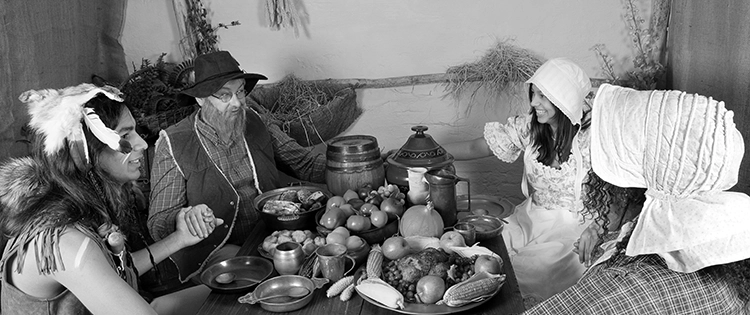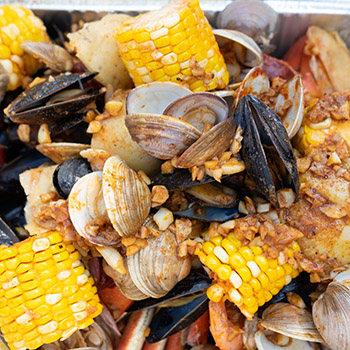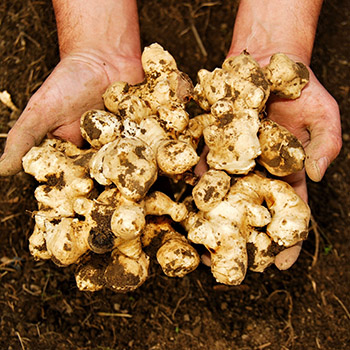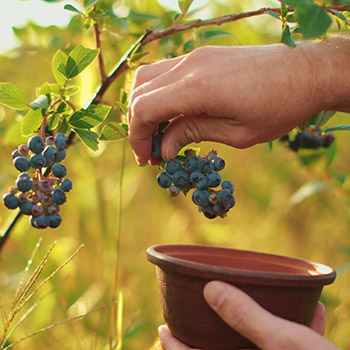When the Pilgrims first arrived in America in 1620, they faced many challenges, including food scarcity and unfamiliarity with the local flora and fauna. Their first winter in the New World was harsh, and many died due to malnutrition and disease.
However, with the help of the Native Americans, the Pilgrims were able to learn about local foods and cooking techniques, which helped them survive and eventually thrive in their new home.
In this piece, I’ll explore 10 foods that the Pilgrims ate when they first arrived in America. I’ll delve into the history of each food, how it was prepared, and its significance in the Pilgrim’s survival and eventual success.
Hardtack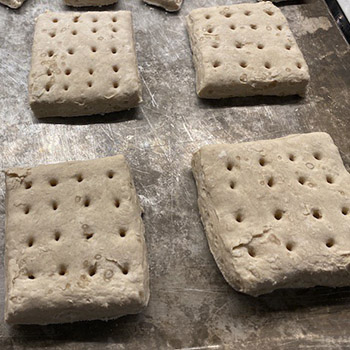
Hardtack was a staple food on the Mayflower.
It was a simple, hard biscuit made from flour, water, and salt. The dough was baked until it was hard and dry, which allowed it to last for months without spoiling. To prepare it for eating, the hardtack was often soaked in water or milk to soften it up.
Salted Meat
Salted meat was another staple food on the Mayflower. To preserve meat for long periods of time, the pilgrims would pack it in salt to prevent spoilage. The meat was often tough and salty, but it provided much-needed protein during the long journey to America.
Succotash
Succotash is a dish made from corn and beans, and it was a staple food for the Native Americans. The pilgrims learned to make it from the Wampanoag tribe and it became a popular dish in the early days of the Plymouth colony.
To prepare it, corn and beans were boiled together with a little bit of salt pork.
Clambakes
Clambakes were a popular way of cooking seafood among the Native Americans. The pilgrims learned how to make them from the Wampanoag tribe and it became a tradition in the Plymouth colony. To make a clambake, a hole was dug in the sand and lined with rocks.
The rocks were heated with a fire and then covered with seaweed. Clams, lobsters, and other seafood were added and covered with more seaweed. The food was steamed until it was cooked.
Cornbread
Cornbread was a staple food for both the pilgrims and the Native Americans. The pilgrims learned to make it from the Native Americans, who had been using cornmeal to make bread for centuries. To make cornbread, cornmeal was mixed with water, salt, and sometimes a little bit of sugar.
The mixture was baked in a pan until it was golden brown. Cornbread was often served with succotash or other vegetable dishes.
Foraging played a crucial role in the survival of the Pilgrims when they first arrived in America. They had limited resources and were not familiar with the local flora and fauna. Foraging was necessary for them to find food and medicinal plants to sustain their lives. With the help of the Native Americans, the Pilgrims quickly learned how to identify and harvest edible plants and wild game.
They also learned how to preserve food through drying, smoking, and salting, which was essential for them to survive harsh winters when food was scarce. But this method was the easiest way for them to preserve loads of food throughout the summer and winter. Foraging provided the Pilgrims with a means of self-sufficiency and ensured their survival in the new world.
Jerusalem Artichoke
The Jerusalem artichoke is a type of sunflower that grows wild in North America.
Native Americans introduced the Pilgrims to this root vegetable, which is high in fiber and iron. It was a valuable food source during times of scarcity, and the Pilgrims found that it could be cooked in a variety of ways, including roasted, boiled, or mashed.
Cranberries
Native Americans taught the Pilgrims how to use cranberries in their cooking, and they quickly became a staple in their diet. Cranberries are rich in antioxidants and have antibacterial properties that help prevent infection.
The Pilgrims used cranberries in sauces, stews, and baked goods.
Wild Blueberries
Wild blueberries are smaller and more flavorful than the cultivated variety. Native Americans showed the Pilgrims how to find and harvest these berries, which are high in antioxidants and vitamin C.
The Pilgrims enjoyed wild blueberries in pies, preserves, and as a snack.
Wild Rice
Native Americans taught the Pilgrims how to harvest and cook wild rice, which is a type of grass that grows in shallow water. Wild rice is a good source of protein and essential minerals. The Pilgrims used wild rice in soups, stews, and as a side dish.
Groundnuts
Groundnuts, also known as wild peanuts, were a valuable food source for Native Americans.
They showed the Pilgrims how to find and harvest these nutrient-rich tubers, which can be eaten raw or cooked. Groundnuts are high in protein and healthy fats, and were often ground into flour to make bread.
To sum up, the pilgrims had to adapt to a new environment and a new way of life when they arrived in America. They quickly learned to utilize the resources that the land provided, both in terms of the animals they hunted and the plants they foraged. The Native Americans played a crucial role in teaching the pilgrims about the new foods they could eat, and the medicinal properties of the plants. Their knowledge helped the pilgrims to survive and thrive in their new home.
The willingness of the pilgrims to learn and adapt to their surroundings was key to their success. They managed to create a new life in America, and their legacy lives on to this day. It’s important to remember the hardships they endured, and the sacrifices they made to create a new home in a foreign land.
Their story is a reminder of the resilience and strength of the human spirit.
Are You Ready For The Upcoming Food Crisis?
Pioneer Recipes Every Homesteader Should Know (Video)
Survival Hacks From The Civil War That Are More Useful Than Ever
